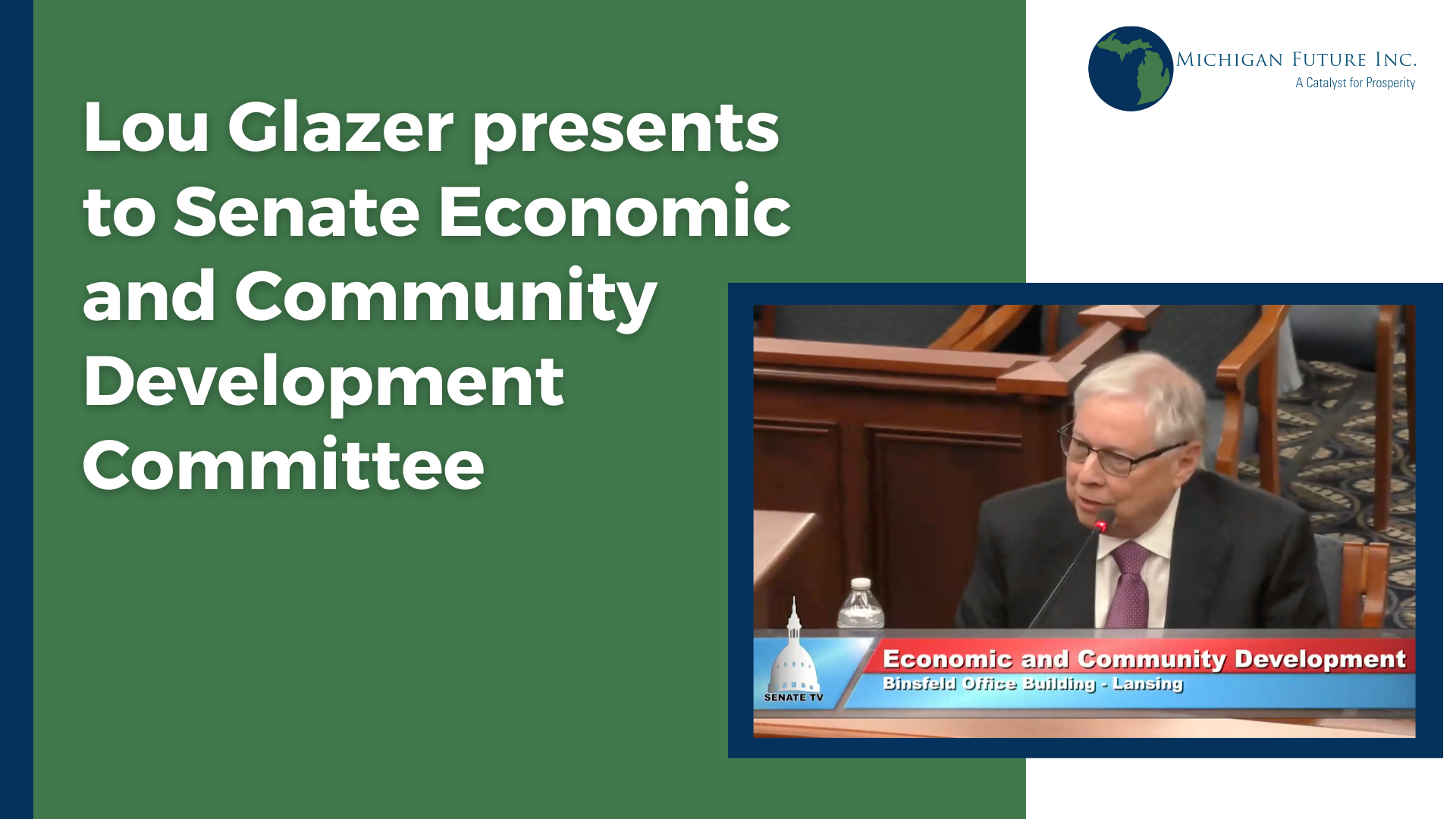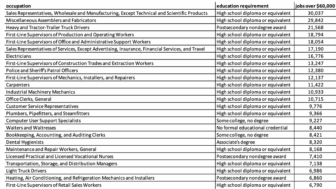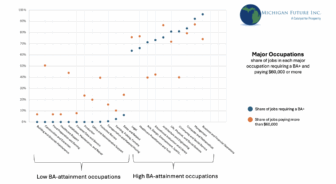
Since the turn of the century, our state has experienced a precipitous decline in economic prosperity relative to the rest of the country. In 1999, Michigan ranked 16th in per-capita income. In 2024, we ranked 39th. What we have been doing over the past 25 years isn’t working. We need a new approach.
Yet every year the same topics seem to dominate the agenda in Lansing, many of which have no hope of restoring Michigan to high prosperity.
The latest example is roads.
Road funding is a central topic of discussion in Lansing today. Fixing the damn roads appears to be a priority for both parties. But fixing the damn roads is not at all related to revitalizing the state’s economy.
In today’s economy, the only thing that is predictive of economic growth is the share of adults – and young adults in particular – that have a bachelor’s degree or more. As we often say, if Michigan does not get younger and better educated, we will get poorer.
But when it comes to getting younger and better educated, fixing the damn roads is not the answer.
In a 2023 report, the Citizens Research Council includes a top and bottom ten list of state road conditions compiled by the U.S. Government Accountability Office. The top ten states in order are Nevada, North Dakota, Florida, Georgia, Idaho, South Dakota, Missouri, Indiana, North Carolina, and Utah.
Does Michigan have awful road conditions? Yes, it is ranked the fourth worst. Is fixing the damn roads worth doing? Of course. Does fixing the damn roads have anything to do with reversing Michigan’s decades long brain drain? The evidence says absolutely not.
A 2022 report from the National Bureau of Economic Research (“Grads on the Go”) calculated the number of recent graduates from every state’s two-year and four-year colleges and universities and compared that figure to the number of recent college graduates living in the state. This allowed them to determine which states were net gainers and which states were net losers of college graduates. Here is how the top ten road conditions states perform:
- Nevada -9.4%
- North Dakota -31.6%
- Florida -11.3%
- Georgia +14.5%
- Idaho -30.0%
- South Dakota -17.9%
- Missouri -2.2%
- Indiana -30.4%
- North Carolina -5.5%
- Utah -19.6%
So only one state––Georgia––on the top ten road conditions list is a brain gain state. All the others have fewer recent college graduates living in their state than they have recent graduates from the state’s community colleges and universities.
Michigan is also a net loser of college graduates –– an unacceptable -13.7% percent. Is this because of our poor roads? No. Three other states at the bottom of the road conditions ranking — Washington, Illinois, and New York — are brain gain states. It turns out that despite their poor road conditions, young college graduates still find these states desirable places to be.
The Citizens Research Council report includes another ranking of state roads from the Reason Foundation, which publishes an annual report on the quality of highways across states. The same pattern holds true with these rankings. Georgia is the only brain gain top ten state, while four bottom ten states are brain gain states: Colorado, Washington, California and New York. (Michigan ranks 23rd.)
What does matter in attracting young talent?
So if road conditions have nothing to do with retaining and attracting young professionals, what does? An article on the “Grads on the Go” study from the Washington Post concludes the “winners are primarily states with cities (that are) large, dynamic, and regionally vital…That would include New York, Washington, California, Illinois, Georgia, Texas, Minnesota, and Massachusetts.” (Colorado is the ninth brain gain state, home to the talent-magnet city of Denver).
Exactly! All of the evidence we have seen is what matters most to attracting and retaining young professionals, by far, is transit rich, vibrant central cities. There were 18.3 million 25-34 year olds with a BA or more in the US in 2023. 4.6 million of them live in the central city of the 58 metros with working age populations of 500,000 or more. Of the nine brain gain states in the U.S., all have transit rich, vibrant central cities.
If you care about getting younger and better educated, the top ten list you want to be on is the cities with the most 25-34 year olds with a B.A. or more. That list is: New York, Los Angeles, Chicago, Houston, Austin, San Diego, Philadelphia, Seattle, San Fransisco, and Boston.
Of the 58 regions with working age populations of 500,000 or more Detroit ranks 47th, Grand Rapids 50th. Detroit has 25,000 young professional residents, Grand Rapids 22,000. New York is by far the nation’s leader with 796,000. Chicago is the Great Lakes leader with 323,000.
So state leaders may be right to focus on transportation infrastructure – it’s just that they’re focusing on the wrong kind. The transportation infrastructure that does matter to concentrating young talent is transit. Add to that walkable neighborhoods that give priority to pedestrians, not cars. So infrastructure/the built environment does matter. But it is infrastructure designed for Generation Z.
Fixing the damn roads is just one of many good to do policy ideas that have little or nothing to do with retaining and attracting young talent. If we fix the roads but don’t have vibrant cities, we will not attract young talent at any scale.
Getting younger and better educated requires strengthening and creating more transit rich and vibrant neighborhoods in our central cities and small towns that can attract and retain young talent. These neighborhoods vary in many ways, but all share common characteristics: they are dense, walkable, high-amenity neighborhoods, with parks, outdoor recreation, retail, and public arts woven into residents’ daily lives. And they offer plentiful alternatives to driving.







